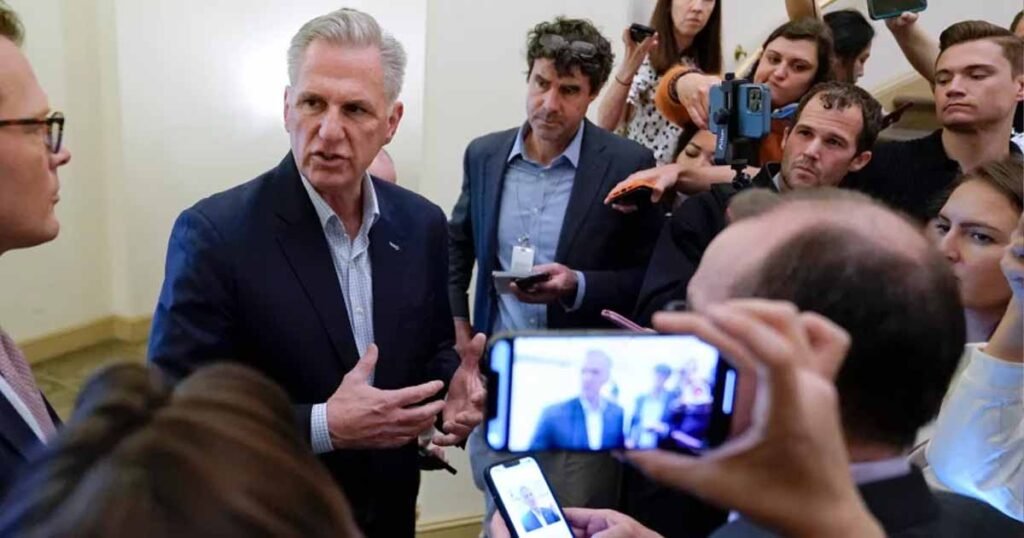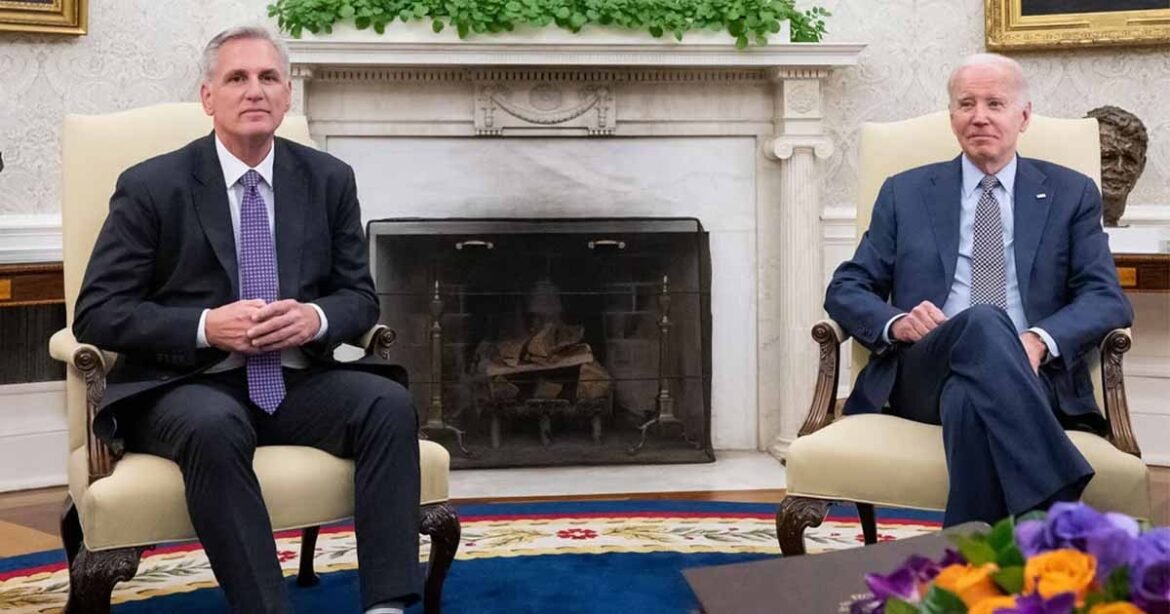The White House and the Republicans have reached an agreement in principle to raise the federal government’s $31.4 trillion debt ceiling days before the deadline to prevent a potentially calamitous default.
President Joe Biden and Republican congressional leader Kevin McCarthy struck a tentative agreement on Saturday to suspend the $31.4 trillion debt ceiling. President Joe Biden referred to the agreement as a “compromise,” whereas House Speaker Kevin McCarthy referred to it as historic reductions in spending”. However, the agreement was disclosed without any ceremony, reflecting the contentious nature of the negotiations and the difficult process it must take through Congress before the United States runs out of money to pay its debts in early June.
You can also read: Turkish general election: Erdogan to enter third decade in power
The US Treasury had previously warned that the country would run out of money to pay its debts on June 5 if no agreement was reached, which would destabilize the US economy and global markets. Now, the agreement would suspend the debt ceiling until January 2025, while capping spending in the 2024 and 2025 budgets, recouping unused COVID funds, accelerating the permitting process for some energy projects, and imposing additional labor requirements for food assistance programs for poor Americans.
A tentative agreement that is not final yet!
The tentative deal was finally reached in a flurry of calls after months of back and forth. Biden and McCarthy discussed the agreement over a 90-minute phone call on Saturday evening, McCarthy briefed his members later that evening, and the White House and the House leader then spoke.
“Negotiators have agreed to cap non-defense discretionary spending at 2023 levels for one year and increase it by 1% in 2025, a source familiar with the deal said,” quoted Reuters.
The agreement would raise the debt ceiling for two years while capping expenditure during that time, but the concessions made to reach it risk angering both Democrats and Republicans. In addition, the agreement must be approved by a divided US Congress. Before the United States runs out of cash to pay its obligations on June 5, next week’s congressional approval will require backing from both parties.

What are Biden and McCarthy saying about the deal?
Biden on Saturday said the agreement “is an important step forward that reduces spending while protecting critical programs for working people and growing the economy for everyone”, and characterized it as a compromise that nevertheless protected Democrats’ key priorities. “The agreement represents a compromise, which means not everyone gets what they want,” he said in a statement. “That’s the responsibility of governing,” he added.
According to McCarthy there are no new taxes and the bill includes “historic reductions in spending, consequential reforms that will lift people out of poverty and into the workforce.”
“I expect to finish the writing of the bill, checking with the White House and speaking to the president again tomorrow afternoon, and then posting the text of it tomorrow, and then we vote on it on Wednesday,” he said.
McCarthy said there was still “a lot of work to do”, but called it an agreement “worthy of the American people”.
Taxes or spending cuts?
The Republicans who control the House of Representatives have advocated for drastic expenditure cuts and funding cuts to the Internal Revenue Service, the United States tax agency.
Republicans have sought expenditure cuts in areas such as education and other social programs in exchange for raising the $31.4tn (£25tn) debt limit, a law that restricts the amount of debt the United States government can incur.
Senior party members have stated that they will not extend the debt ceiling unless the government reduces spending in the coming years. In response, Democrats have proposed raising certain taxes.
Biden and the Democrats have advocated for higher taxes on the wealthy and corporations in order to reduce the national debt, while also increasing expenditure on programs such as free community college.
Both parties have suggested that one of the main obstacles was a Republican effort to increase work requirements for recipients of food stamps and other federal assistance programs, a long-held Republican objective that many Democrats have opposed strongly.
Finding a compromise that can pass the House, which has a Republican majority of 222-213, and the Senate, which has a Democratic majority of 51-49, requires the two parties to systematically thread the needle.
The protracted impasse over raising the debt ceiling alarmed financial markets, weighing on equities and forcing the United States to pay record-high interest rates on some bond sales. According to economists, a default would have a far greater impact, likely sending the nation into recession, jolting the global economy, and causing an increase in unemployment.
The debt ceiling would be raised for two years, preventing further standoffs until after the 2024 presidential election, according to unofficial reports.
The deal to bring short term relief for markets only?
The tentative agreement to resolve the impasse over the U.S. debt ceiling could rapidly become bad news for the financial markets. Despite the fact that investors would welcome an end to uncertainty, the relief that may result from an agreement may be only temporary. Once the deal is reached, the U.S. Treasury is expected to issue a large amount of new Treasury bills, which could deplete banks’ reserves and put pressure on liquidity. This could lead to higher interest rates, increased funding costs for companies, and potential market volatility if liquidity drains from the system. While some believe money market mutual funds could absorb the issuance, others express concern that financial markets have not fully priced in the risk of a liquidity drain from banks’ reserves.
The resolution of the debt ceiling impasse remains uncertain, and if not resolved soon, it could lead to market volatility and disruptions. It is also crucial for financial markets to consider the potential consequences of a liquidity drain from banks’ reserves, as the resolution of the debt ceiling impasse remains uncertain.


